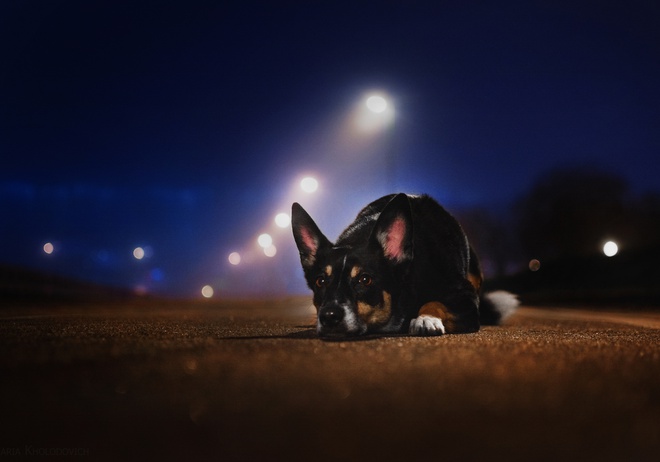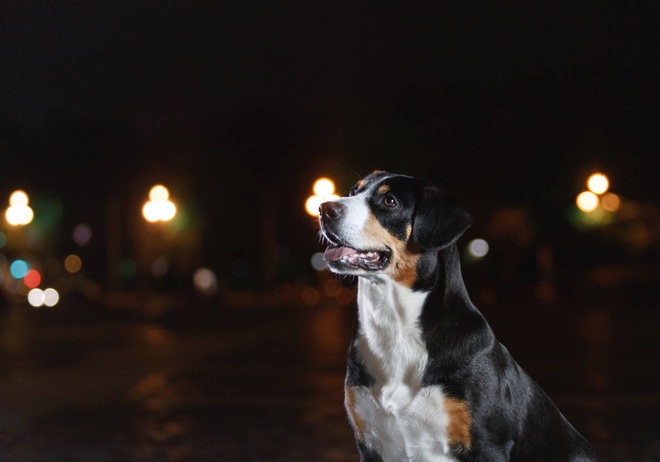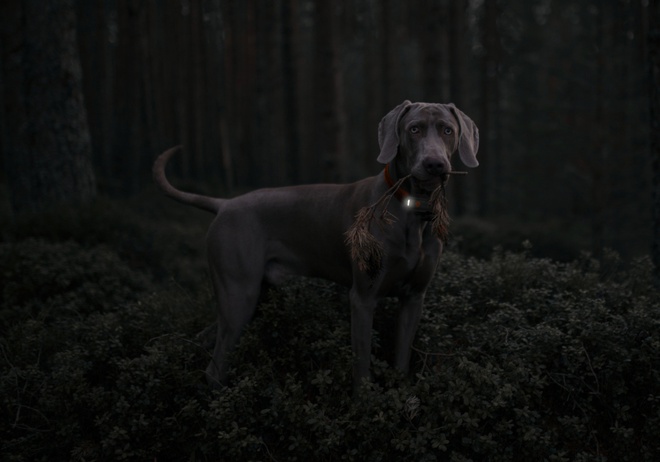How can I locate my lost dog at night?
Losing a dog can be a stressful and heart-wrenching experience. You may think that it's even more challenging when you're trying to locate them in the dark of night. However, the nighttime can offer a unique set of advantages that may help increase your odds of finding your beloved pet. With reduced noise, traffic, and increased nocturnal activity that canines usually exhibit while outdoors, this can be an ideal time to search.

Reading time : 4 min
In this article, we'll share some tips and strategies for locating your missing dog at night and to help you bring your beloved pet back home. Whether you've recently lost your dog or want to prepare for the possibility, this article will provide you with valuable insights to help you navigate the process.
TOPICS
Why look for your lost pet at night?

Believe it or not, searching for a lost dog at night can come with advantages and increase your chances of finding them. There is inevitably far less noise and human activity at night, so you’ll hear any barks or other sounds your dog makes more easily. There’s also one perk that may surprise you: using a flashlight, your dog’s dilated eyes will be easily visible due to the large reflection of their retinas.
This quieter environment could also help your dog feel more comfortable and less overwhelmed. Dogs have a keen sense of hearing and smell, and the reduced noise and scent pollution can make it easier for them to pick up on familiar scents and sounds that could lead them back to you.
Remember to stay safe by bringing a friend or family member and wearing reflective clothing if you plan to search at night.
Tips to help you locate your dog at night

In fact, there are several strategies you can use to increase your chances of locating your pet at night. Here are just a few:
- Check at home first: If your dog is missing, first check your home and your immediate surroundings. Is your dog hiding somewhere in the house or yard? If you have a fenced yard, check to see if there are any holes or gaps in the fence where your dog might have escaped.
- Call and verify your lost dog’s microchip contact information: If your lost dog has been microchipped, call the microchip company to verify that your contact information is up to date. This will ensure that you can be contacted if someone finds your dog.
- Determine your search radius: Did your dog escape in a fenced-in yard, or did they run away while on a walk in the forest, off the leash? If so, determine how far they could have gone and focus your search efforts in that area.
- Use a whistle: Dogs have an excellent sense of hearing, so using a whistle can help you get their attention if they are nearby—especially if they have been trained with one. Blow the whistle several times and listen for any response.
- Use treats: If your dog is nearby but won’t come to you, try using treats to lure them back. Bring their favorite treats with you and shake the bag to get their attention.
- Use fluorescent collars: Fluorescent collars can help you see your dog in the dark. They reflect light and make it easier for you to spot them from a distance.
- Use GPS tracking collars with flashing lights: GPS tracking collars can help you locate your dog if they are lost, and flashing lights can make it easier for you to spot them in the dark.
- Contact local animal shelters: If someone finds your lost dog, they may take them to a local animal shelter. Contact the animal shelters in your area and provide them with a description of your dog.
- Consider using other scent-tracking dogs: Scent-tracking dogs are trained to follow the scent of a lost dog and can be very effective in finding them. Contact local law enforcement agencies or private companies that offer this service.
- Use motion-activated cameras: Motion-activated cameras can help you monitor areas where your lost dog might be hiding. These cameras can capture images of animals moving around in the dark and alert you when there is activity.
- Consider using drones: Drones equipped with thermal imaging cameras can help you search large areas quickly. These cameras can detect heat signatures from animals and make it easier for you to spot your lost dog.
- Use social media platforms specifically designed for finding lost pets: There are several social media platforms specifically designed for finding lost pets. These platforms allow you to post information about your lost pet and connect with other pet owners who may have seen them.
- Use night vision goggles: Dogs have a higher number of rods, the photoreceptor cells in the retina responsible for perceiving light in conditions with limited illumination. The increased number of rods, along with larger irises, grant dogs enhanced vision in poorly lit settings and during nighttime. For humans, night vision goggles can help out in dark situations so you relocate your lost dog.
- Consider hiring a pet detective: Pet detectives are professionals who specialize in finding lost pets. They use a variety of techniques including scent tracking dogs, surveillance cameras, and social media to locate missing pets.
Find out the 5 most important steps to find your lost pet
All the information you need to find your beloved companion
Avoid this situation altogether, thanks to a GPS tracker

End the stress of losing your fluffy pal once and with an ingenious invention tailored for their safety: the GPS tracker, available for both felines and canines. This sleek, inconspicuous gadget seamlessly fastens to your pet's collar, supplying real-time location data with zero distance constraints.
Bid adieu to frenzied pet hunts and embrace serenity, as you stay informed about your cherished companion's location constantly. As a bonus perk, the GPS tracker boasts a return feature, akin to a "clicker," based on positive reinforcement. By activating the buzzer or vibration setting, your furry friend will excitedly come home for a well-earned reward.
Good to know: Weenect GPS trackers are ideal for locating your pet in dark areas and nighttime conditions because they also offer a flashlight!
Conclusion
In conclusion, finding a lost dog at night requires patience, persistence, and creativity. By following these tips and using all available resources, you'll improve the likelihood of finding your dog safe and sound. Above all, don’t give up hope: many dogs are found safe and sound after being lost for several days. Keep up the search!
For more stories about lost dogs who found their way back home,click here.
Continue reading our guide
This article is part of a complete guide on the subject. Do not miss the next chapters.
How to find a lost pet ?
Discover the 5 most important steps
All the information you need to find your beloved companion
